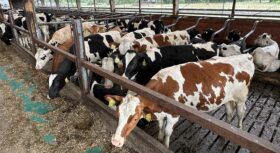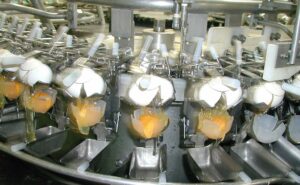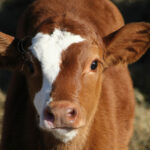By Dr. Inge Heinzl, Editor, EW Nutrition
Diarrhea causes a higher workload, increased costs for treatment, losses, and, of course, lower benefits for the farmer. But not all diarrheas are equal. How do they differ, where do differences come from, and what can you do to protect your animals?
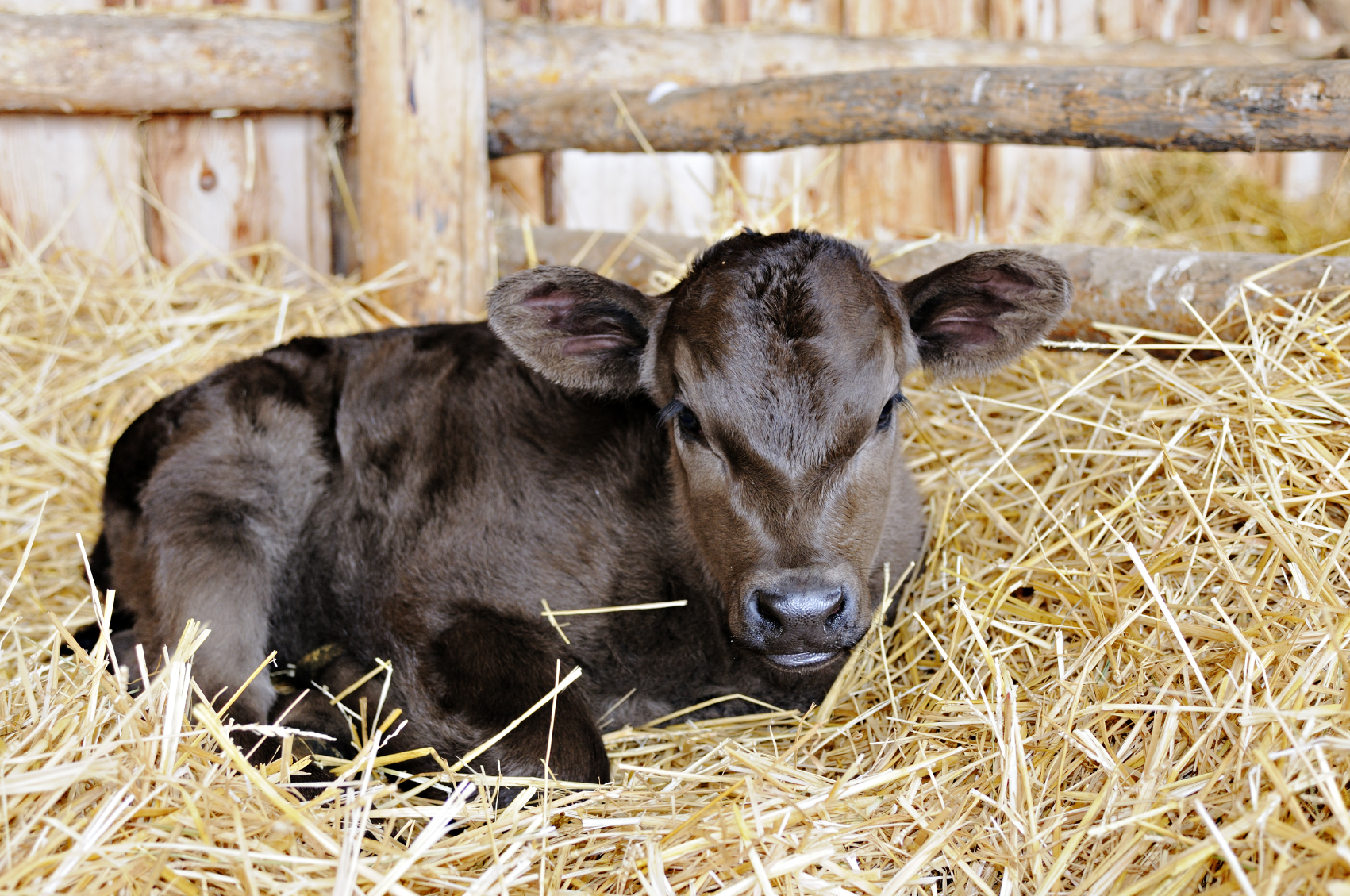
Diarrhea is a protective measure of the organism
In general, diarrhea is characterized by more liquid being secreted than being resorbed. However, diarrhea is not a disease but only a symptom. Diarrhea has a protective function for the organism: the higher liquid volume in the gut increases motility, and pathogens and toxins are more readily excreted.
Diarrhea can occur for several reasons. It can result from inadequate nutrition but also the reaction to an infection by pathogens such as bacteria, viruses, and protozoa.
Where does the fluid come from?
Depending on how the accumulation of fluid in the gut is generated, there are different kinds of diarrhea:
- In the case of secretory diarrhea, as the name says, the fluid accumulation comes from an increased secretion into the gut caused by toxins activating enzyme systems. The gut mucosa can no longer resorb this higher amount of liquid.
- When the animals suffer from malabsorptive diarrhea due to destroyed enterocytes and shortened villi, the enzyme activity and absorption capacity are reduced. Less liquid can be absorbed and has to be excreted via the gut.
- When inflammatory diarrhea occurs, the gut mucosa is damaged. Higher amounts of mucus, protein, and blood are released into the gut lumen.
Due to multiple infections, diarrhea often is a mixture of different forms.
Multiple causes can be responsible
For the occurrence of diarrhea, different causers can be a possibility. Besides infectious pathogens, also the feed must be considered.
-
Bacteria often produce toxins
E. coli is a common agent of the gut microflora and in general it is harmless. However, E. coli can also be the cause of different types of diarrhea, depending on the virulence factors. Virulence factors of E.coli are, e.g., fimbria for the attachment to intestinal receptors or the ability to produce toxins influencing the secretion of ions and liquids. Example: enterotoxic E. coli (ETEC) F5 and F41 occurring during the first days of life.
In general, Salmonella plays a secondary role in calf diarrhea. Of the Salmonella serovars, mainly S. Typhimurium and S. Dublin are found in calves. Salmonella produces enterotoxins that attack the intestinal wall.
Clostridia infections belong to the most expensive ones in cattle farming globally. In herbivores, clostridia are part of the normal flora of the gastrointestinal tract; only a few types can cause severe disease. In calves, the necrotizing toxin-producing Clostridium perfringens can lead to enterotoxaemia manifesting in acute bloody diarrhea.
-
Viruses cause lesions in the gut
Rotavirus, which occurs mainly during the 5th -15th day of life, is the most common viral pathogen causing diarrhea in calves and lambs. If more enterocytes are destroyed than regenerated by the organism, the resorption surface in the gut decreases. With increasing age, animals develop immunity against this pathogen.
Coronavirus usually attacks calves at the age of 5 – 21 days (mainly correlated with the decreasing concentration of antibodies in maternal milk). They cause similar lesions in the intestine as rotavirus but additionally lead to necrosis of the crypts in the large intestine. The digestive and absorptive function is lost, resulting in reduced reabsorption of fluids. 3 to 20 % of diarrhea arising in calves is caused by Coronavirus.
-
Protozoa can lead to malabsorptive diarrhea
Cryptosporidium parvum (mainly 1-2 weeks after birth) belongs to the coccidia and is presumed to be the most common pathogen to cause diarrhea (prevalence up to more than 60 %) in calves. Cryptosporidium is transmitted via oocysts found in feces and on the farm equipment. Cryptosporidia destroy the microvilli in the gut, the function of the gut mucosa is reduced, the resorption area decreases. Consequence: loss of enzyme activity and, therefore, an insufficient breakdown of sugar and protein, resulting in malabsorption.
-
Calves need their special feed
In general, raw materials which cannot be well digested by the calf (mainly soya products, often used in milk replacers) or which cause allergy can cause diarrhea in calves. Also, antibiotics can lead to an imbalance of the intestinal flora, destruction of the villi, and malabsorptive diarrhea.
Trial shows promising results in the field
A field study with the egg powder-based product Globigen Dia Stop was conducted with 16 calves suffering from diarrhea. They were fed twice daily 50 g of Globigen Dia Stop stirred into the milk replacer.
Result (fig. 1): already one day after the first application of Globigen Dia Stop, 50 % of the calves recovered. After seven days, all calves overcame diarrhea. On average, one calf needed 2,4 treatments to show a full recovery from diarrhea (≙ 1,25 treatment days).
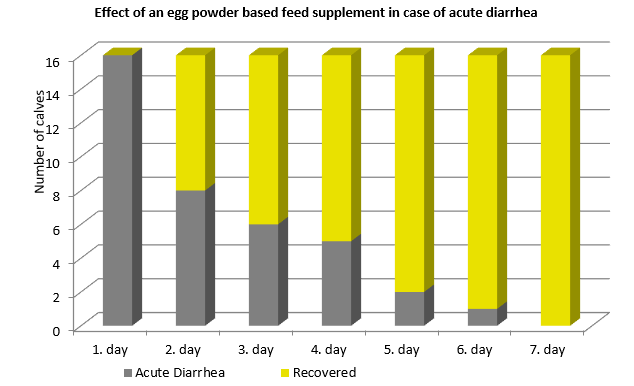
Egg immunoglobulins support against diarrhea
Egg immunoglobulins can effectively support calves in their fight against diarrhea. Immunoglobulins can act against bacteria, parasites, and viruses, not only against bacteria as antibiotics do. With egg immunoglobulin-based products, the farmer has a tool at his disposal that is easy to handle and does not require a withdrawal period. As there is no danger of the generation of resistance, these products are ideal for reducing the use of antibiotics in animal production.
Article initially published in NutriNews









